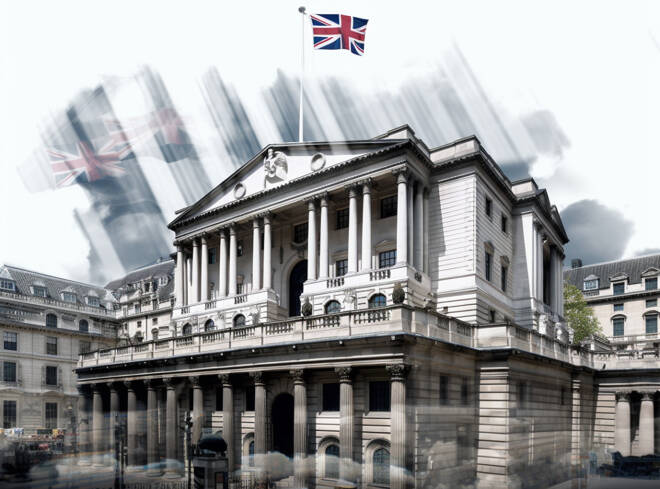Advertisement
Advertisement
BoE Slashes Rates to 5%: First Cut in Four Years
By:
Key Points:
- The Bank of England cuts interest rates for the first time in over four years, reducing its key rate to 5% in a significant monetary policy shift.
- Markets had priced a 61% probability of a rate cut. The decision was shrouded in uncertainty due to a six-week communication restriction.
- The rate cut signals the end of a prolonged tightening cycle. The Bank Rate had been held at a 16-year high of 5.25% since August 2023.
Bank of England Cuts Interest Rates to 5%
The Bank of England (BoE) has made a significant move in its monetary policy, cutting interest rates for the first time in over four years. The central bank reduced its key rate to 5%, marking a shift in its approach to managing the U.K. economy.
Surprise Decision Amid Market Uncertainty
The decision came as a surprise to many, given the lack of clear signaling from the BoE in recent weeks. Prior to the announcement, markets had priced in a 61% probability of a 25-basis-point reduction. This uncertainty was compounded by the recent six-week communication restriction due to the U.K. general election.
Inflation Target Achievement
The rate cut follows two consecutive months of U.K. inflation hitting the BoE’s 2% target. This achievement likely played a crucial role in the central bank’s decision to ease monetary policy, despite concerns from some policymakers about wage growth and sticky services inflation.
End of Rate Hike Cycle
The Bank Rate had been held at a 16-year high of 5.25% since August 2023. This cut signals the end of a prolonged tightening cycle and suggests a shift in the BoE’s outlook on economic conditions.
Policymaker Divisions
Recent voting breakdowns have shown a split among policymakers, with two votes for a rate cut and seven for a hold. The decision to cut rates indicates a potential shift in the balance of opinions within the Monetary Policy Committee.
Market Forecast
The unexpected rate cut is likely to have a bullish impact on U.K. equities and bonds in the short term. The pound may experience some initial volatility but could stabilize as markets digest the implications of the BoE’s decision. Traders should closely monitor the upcoming Monetary Policy Report for insights into the central bank’s economic growth and inflation projections, which will be crucial for gauging future policy directions.
About the Author
James Hyerczykauthor
James Hyerczyk is a U.S. based seasoned technical analyst and educator with over 40 years of experience in market analysis and trading, specializing in chart patterns and price movement. He is the author of two books on technical analysis and has a background in both futures and stock markets.
Did you find this article useful?
Latest news and analysis
Advertisement
